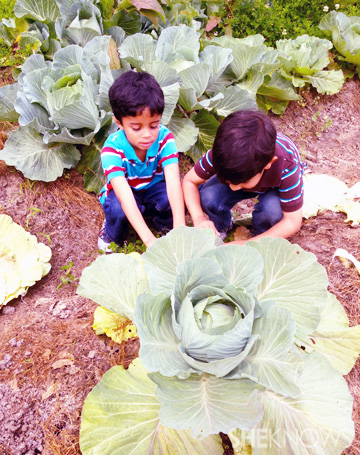
Spring science activities
We're ready for spring! This is the time of year when we enjoy spending homeschool days outdoors — reading in the clubhouse, math on the patio, gardening and observing nature.
With so many changes outside, spring is also the perfect time for science activities.
After a rather long winter, we are ready to turn our sights to the spring season with more daylight and outdoor play days. Here are just a few ideas to get your student outdoors for some fresh air and science!
Science notebook
A science notebook is a creative spring project inspired by homeschooling pioneer, Cindy Rushton. A science notebook is much like a nature journal — the notebook will be a keepsake displaying your child's growing knowledge of nature during the spring months. This project can be as simple or as elaborate as you like if you include die-cuts, frames, stencils, shapes and edgings on your pages much like a scrapbook.
Some ideas of things to include in your notebook:
- Sketches and artwork with info on when, where, what and why
- Snapshots of your nature finds throughout your yard or on nature trails
- Checklists for birds, bugs and plants
- Pressed flowers and leaves
- Glossary of terms studied
- Poetry
- Lists of new findings
- Journal entries about nature outings
- Favorite quotes about nature
- Reading list
- Science study notes
Backyard critter count
Learning about the bugs that live in your yard is fun and helpful. You will need gloves, a magnifying glass, a notebook and pencil. Find a spot in your yard where critters might live and search through plants, under leaves, dig in the ground, under rocks, up in the trees and through the grass. Place your bugs in a well-ventilated, clean container for more in-depth observation and take notes about the type of bugs and insects you find. Use the magnifying glass to get up close and personal with your tiny critters. Search online or use resources from your local library to learn what they eat, where they come from, their habitat, benefits or harmfulness of your bug.
Butterfly habitat
Creating a butterfly habitat can be educational and helpful to the environment. You can create a butterfly-friendly habitat with a very small space by dedicating a small portion of your yard for plants and flowers that attract butterflies. Some favorite butterfly plants and bushes are the Butterfly Bush, Lantana, Phlox, Butterfly Weed, Salvia and Pentas. Having a place where butterflies can flourish provides a way to study them and learn about their ecosystem. You can find plenty of butterfly fun facts online too. If you don't want to go to the trouble of building a habitat, you can always buy one at the Online Science Mall.
Gardening 101
Plant a variety of seeds and monitor their growth over a six-week period. Some gardening teaching points: Soil quality, nutrients from the soil, available water, warmth, sun, oxygen, dormancy, germination and protection from animals. The opportunities for teaching in the garden are endless.
Resources for more spring learning
- Spring Science Crafts from Scholastic
- Spring Science Weather Unit
- Preschool Spring Science Lessons
- Plant Life Cycle Activity
With a little creativity, the possibilities for outdoor learning abound in spring! Whatever you choose to do, remember to feel the warmth of the sun, smell the flowers and enjoy the look of wonder on your child's face!
Image credit: Tiany Davis
More about homeschooling
Online homeschool options
How to find a homeschool support group
Free and frugal homeschooling



















